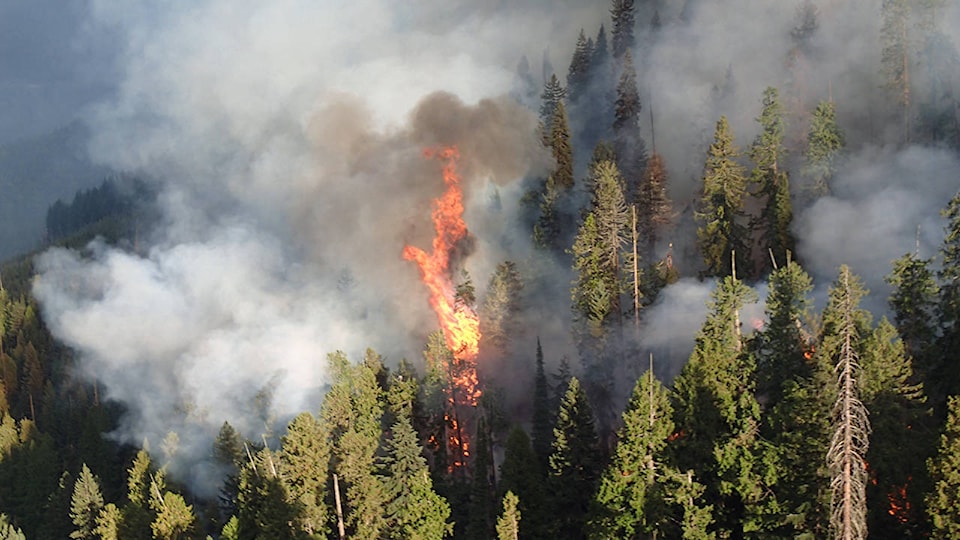It’s been a very long fire season for Shelley Bird, the communications officer for Mount Revelstoke and Glacier National Parks.
Parks staff responded to 29 fires in the two parks and some of those 2 fires are still active. Throughout the parks, there are hundreds of smouldering patches, wafting plumes of smoke into the air.
Glacier National Park experienced the bulk of the fires in the Revelstoke region, largely because of the proclivities of nature as 22 of the fires were started in that park by lightning strikes among the tinder dry woodland. Mount Revelstoke National Park had two fires started by lightning. The remaining fires were caused by human carelessness.
It’s easy for the average person to become numb to the statistics of how many thousands of hectares have burned, the cost of fire fighting efforts, the amount of equipment required and the number of person-hours spent fighting fires. After a time, if you aren’t one of the thousands of people who were evacuated from their homes because of the proximity of fire, the facts and figures become a blur.
That all changes when you actually see the forest smoldering and witness, up close, the devastation of the fires.
That’s why, last week, Bird called the Revelstoke Review and offered us a singular opportunity to do just that. Friday morning , we boarded a Parks Canada helicopter and took a tour of the fire zones, with a particular focus on the Prairie Hill fire; a fire that has been burning since early July. That fire is located on the eastern portion of Glacier National Park and has consumed more than 3,500 hectares of forest.
Over the noise of the helicopter, Bird pointed out some of the characteristics of forest fires.
“You can see how the fires burn uphill and how you’ll have a strip of burn going right up a mountain. Then there’s a green strip that remains untouched and another burn zone that’s been caused when sparks have flown over that green swath and landed on another area just beyond. Then that burns uphill and the pattern continues,” she said, pointing out a patchwork of burned zones that form an almost geometric pattern of charred forest interspersed with strips of untouched green.
We’re flying at about 7,000 feet, and looking down we can see plumes of smoke rising from the green forest.
“There’s still some spots smoldering down there. We’re keeping an eye on them. Actually, that’s what most low and mid-intensity fires look like. People expect to see these walls of flames, and that’s what the high intensity fires are like, but we try to keep them suppressed to where they smolder like that, particularly near highways or populated areas. Every so often a tree will “candle” and then you see flames burst out of the forest. It’s quite a sight,” said Bird.
Given the terrain much of the fire suppression is done by helicopters dropping water on the fires. In some areas, when manpower is required and roads are not available, crews are lowered into the fire zones on a sling.
It’s dangerous work.
“The Prairie Hill fire stayed on the upper slopes for a long time and then, one night, the air got warmer and the wind came up. It made a run to the south and doubled in size overnight,” explained Bird, shouting over the sound of the rotors as we slid along the side of a sheer rock face showing signs of a fire now extinguished.
But as a Parks professional, Bird can see the positive side of the past fire season. She maintained that not all fires should be seen as bad.
“Of course we want to make sure that structures aren’t burned and no one is hurt,” she said.
“When we had lightning strikes on Mount Revelstoke, that was a priority. But you have to realize that fires are also a natural part of how forests work. By next year you’ll see the burned areas rejuvenated with new growth of trees like white barked pine. It actually makes for a healthier forest in the long run.”
The most remarkable aspect of the fires for her, said Bird, is the professionalism, courage and teamwork displayed by the fire fighting crews.
“It’s all a little bit of a blur. It was a long season. But I need to tell you that we have such great people and I’m very proud to be a small part of the team.”
